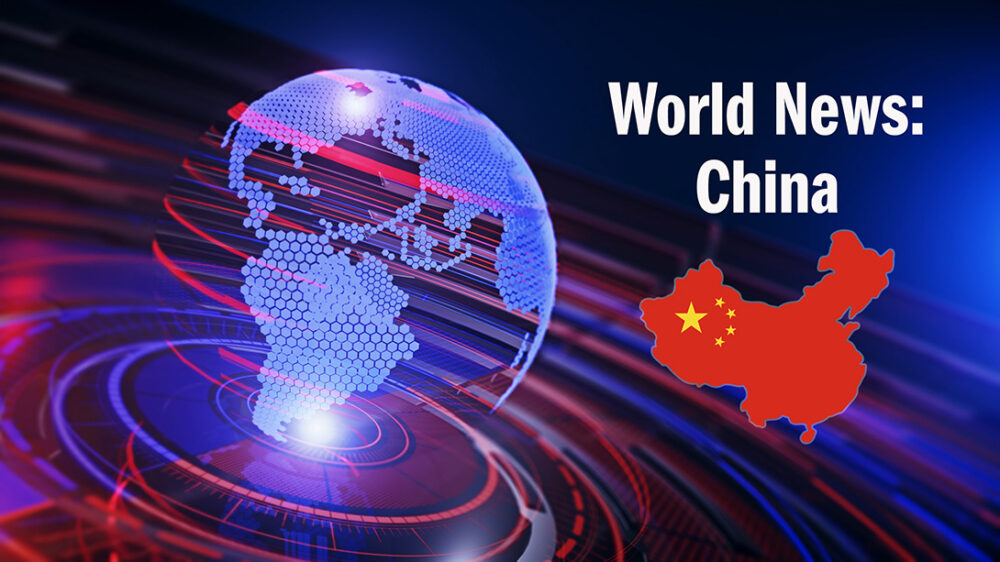Copyright Santa Clarita Valley Signal

By Catherine Yang Contributing Writer Markets rallied Monday ahead of the meeting between U.S. President Donald Trump and Chinese Communist Party leader Xi Jinping, in which the two are expected to strike a deal that will increase trade and at least pause a rare-earth restriction that was expected to disrupt global supply chains. Trade officials on both sides, who met last week for the fifth round of in-person talks in Malaysia, announced on Sunday that they had reached a framework for a trade agreement. Chinese negotiators said the U.S. position had been “tough.” U.S. Treasury Secretary Scott Bessent outlined a list that suggested the Chinese side had agreed to everything Trump had raised. In an interview with NBC’s “Meet the Press” on Sunday, Bessent said, “President Trump gave me a great deal of negotiating leverage with the threat of the 100% tariffs.” Trump has said he wants a “deal on everything,” previewing a long list of issues he will bring up at the bilateral meeting. The U.S. president is on a tour through Asia that began with attending the first day of the ASEAN summit in Malaysia on Sunday. There, he oversaw the signing of a peace deal between Thailand and Cambodia, and signed trade agreements with Vietnam, Malaysia, Cambodia and Thailand. His next stop on Monday was Japan, where the emperor received him before meeting with newly elected Prime Minister Sanae Takaichi. Trump is scheduled to travel to South Korea on Wednesday to meet with President Lee Jae Myung, address global and business leaders at APEC, and then meet with Xi on Thursday. Here’s what Trump and Xi are expected to finalize. Rare-Earth Exports High on the U.S. list of demands is reliability in China’s rare-earth exports. On Oct. 9, Beijing announced export controls on seven rare earths, building on an April announcement and bringing the total to 12. Crucially, the Chinese communist regime would require licenses for trade of any goods containing 0.1% or more rare earths that were mined or processed in China, and China controls some 90% of rare earth processing. When Beijing announced restrictions in April, the slowdown in rare-earth exports put global automakers at risk of having to shut down production lines for weeks. The recent move temporarily derailed Trump-Xi talks. On Oct. 10, Trump threatened 100% additional tariffs and other export controls, as officials in the United States and other international bodies called on China to roll back the restrictions. Then, U.S.-China talks began, with U.S. Trade Representative Jamieson Greer saying the Chinese side agreed to defer in the face of the high tariffs. Bessent said similarly that, following the most recent round of in-person negotiations, he’s expecting “some kind of deferral” on the restrictions. “I believe that they are going to delay that for a year while they reexamine it,” Bessent said in an ABC interview. The United States has long had concerns about its reliance on China for critical minerals, which are widely used in electronics. Trump, in his second term, has accelerated the diversification of this supply chain, with federal agencies investing in mining operations and the president most recently securing critical mineral agreements with Thailand and Malaysia. “In about a year from now, we’ll have so much critical mineral and rare earth that you won’t know what to do with them,” Trump said after announcing a critical minerals deal with Australia on Oct. 20. Soybeans In the current trade war, China pulled a move it used in 2018 by boycotting U.S. soybeans amid a record harvest. Trump has said soybeans would be a “major” topic of discussion as Beijing’s boycott has been an “economically hostile act.” China is the largest buyer of U.S. soybeans, accounting for about 60%, according to the American Soybean Association, which released a report in August on the issue and called on Trump for support. This means no other market can fill the gap left by China, which turned to Brazil and Argentina to meet its soybean needs this year, used mainly for livestock feed. Trump has said he will bail out American soybean farmers in the short term with tariff revenue and expects Beijing not to try to use U.S. farmers as leverage. Trump previously said he hoped China would “quadruple” its U.S. soybean purchases. During Bessent’s Monday ABC interview, he said that domestic soybean farmers “will feel very good about what’s going on, both for this season and the coming seasons, for several years” under terms agreed to in the framework deal. Fentanyl In February, Trump imposed tariffs on China over its failure to fulfil its role in curbing the fentanyl crisis. In an executive order, he stated that Beijing subsidizes chemical companies that produce fentanyl precursors, supports the drug trafficking network through money laundering schemes and other means, and could have shut down these operations if it wished. Of the 55% tariffs on China currently in effect, 20% are due to its role in the fentanyl crisis. Trump recently said that China is smuggling fentanyl to the United States through Venezuela. The U.S. warship USS Gravely is taking part in joint exercises through Oct. 30 at the islands of Trinidad and Tobago, off the coast of Venezuela. Trump has said that he expects Beijing to do something about fentanyl if it wants to reduce the 20% tariff. FBI Director Kash Patel told lawmakers in testimony earlier this year that he has called Chinese counter-narcotics officials to schedule additional chemicals, which would ban the manufacture and sale of additional fentanyl precursor chemicals. Three chemicals were added to a list in August, with restrictions going into effect on Sept. 1. Russian Energy Washington has called on Beijing multiple times to exert pressure on Moscow to end the war in Ukraine, and has raised the possibility of curbing purchases of Russian energy to do so. “We put very big sanctions on Russia. … They’re very biting, they’re very strong — but I’d like to see China help us out,” Trump said aboard Air Force One on Oct. 24. “One of the things we’ll talk about is the Russia-Ukraine [war]. They’re killing 7,000 people a week — soldiers, mostly soldiers — and we’ll certainly be talking about that. He’d like to see that end, too.” The United States has sanctioned Russian oil companies to cut off financing of the war as it tries to get the parties to come to a cease-fire agreement. China is a major buyer of Russian oil, and Beijing has so far refused to condemn the war or make any commitments to end its arms or financial support for Russia’s war efforts. No Change on Taiwan Issue Reports that Beijing wanted Washington to defer to the Chinese regime on the issue of Taiwan earlier this month prompted U.S. officials to reiterate the United States’ unchanged position. The United States has a “One China” policy that recognizes Beijing as the governing body of China, and Taiwan as a separate entity with which it does not have a formal defense pact. The 1979 Taiwan Relations Act and subsequent “Six Assurances” allow for weapons sales to Taiwan with no input from China and no position regarding Taiwan’s sovereignty. Beijing has adopted the term “one China principle” but uses it to refer to the idea that Taiwan should be under the CCP’s territory and rule. It often pressures other nations to adopt its definition of the policy over the United States’ policy. Trump said before leaving for his Asia tour that he would be discussing Taiwan with Xi. Aboard Air Force One, he echoed previous comments in saying that he did not think the Chinese regime would attack Taiwan in 2027, as Xi has instructed the Chinese military to prepare for. “I hope they won’t, but we’ll have to see. Maybe they will, maybe they won’t,” Trump said. “It would be very dangerous for them to do [so].” Trump added that he believes China “wants to have 10 great years — and they can … or they can have some bad years — and they don’t want that.” Tariffs and Trade Deficit According to Trump and U.S. officials, key to the recent negotiations was the president’s ability to impose tariffs in retaliation for Beijing’s unfair trade practices, such as the rare-earth restrictions. Trump in April announced several tariffs on China, totaling in the triple digits, and they have been paused and pushed back several times as the two nations try to work out a deal. Tariffs of about 157% were set to go into effect on Nov. 10, before Trump threatened 100% additional tariffs to begin on Nov. 1 if Beijing went through with the rare-earth restrictions. Trump administration officials have said several times that the Chinese regime wants to bring that number down and has continued talks with the United States to that end.



